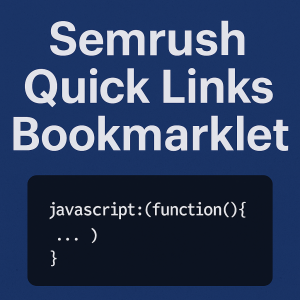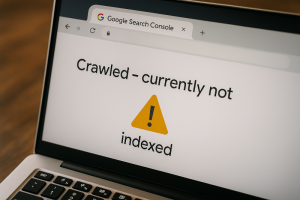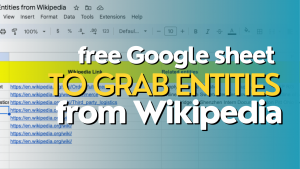The robots.txt file might be one of the simplest tools in your SEO toolkit, but it’s also one of the easiest to mess up.
Why Robots.txt Still Matters?
This little text file tells search engines what they’re allowed to crawl on your site. Done right, it can keep bots out of your staging environment, block low-value URLs from being indexed, or guide them toward your XML sitemap.
Done wrong, it can wipe your site from Google’s index or hide your most important content.
Despite its simplicity, a lot of SEOs and site owners still find robots.txt confusing. What do wildcards do? Should you block query strings? Why is your JavaScript file being skipped?
That’s exactly why I built a new GPT to help.
What This GPT Does
This GPT was built to make robots.txt easier for everyone, whether you’re fixing a broken one or starting from scratch.
Here’s what it can do:
- Explain any
robots.txtfile line by line
Just paste in your file or the URL, and it’ll translate each directive into plain English. No technical jargon. Just clear explanations of what’s allowed, what’s blocked, and why it matters. - Help you build a new file from scratch
Not sure what to allow or disallow? The GPT will walk you through common questions:
– Do you want to block your search pages?
– Should all bots be treated the same?
– Do you want to include a sitemap link? - Highlight potential mistakes
It’ll flag risky directives likeDisallow: /or improper wildcard usage so you don’t accidentally block your entire site or confuse search engines.
It’s designed to be accurate, beginner-friendly, and safe. You don’t need to know anything about crawler behavior. You just need to know what you want bots to see or skip.
Common Pitfalls It Can Help You Avoid
The robots.txt file is deceptively simple, which is why it’s so easy to break. This GPT is built to catch the most common (and painful) mistakes before they go live.
Here are just a few problems it can help you avoid:
- Accidentally blocking your entire site
A single line likeDisallow: /underUser-agent: *tells all bots to avoid everything. - Blocking important resources
Disallowing directories like/assets/or/js/can stop Google from loading your CSS or JavaScript files, which means they won’t fully render your pages. - Misusing wildcards or special characters
A rule likeDisallow: *?filter=only works if the syntax is valid. The GPT explains how wildcards and anchors (*and$) behave. - Leaving out your sitemap
Including aSitemap:directive makes it easier for search engines to discover your pages. - Trying to use
robots.txtto stop indexing
A blocked page can still appear in search if it has backlinks. This GPT reminds you when you should be usingnoindexinstead.
These aren’t rare mistakes. They show up on client sites all the time. This GPT helps catch them early, before they turn into bigger SEO problems.
Why This Matters for Modern SEO
In an era of AI-generated search results, answer boxes, and LLM-powered crawlers, managing what bots can and can’t access is more important than ever.
Google, OpenAI, Anthropic, Perplexity, and others are all crawling the web with increasing frequency. Your robots.txt file is the front door, and it’s up to you to decide who gets in and what they can see.
A well-configured file can help you:
- Protect sensitive or low-value pages from showing up in AI summaries.
- Ensure important content and resources (like product pages or blog posts) remain crawlable.
- Conserve crawl budget on large sites by blocking duplicative or unnecessary paths.
- Control how your content is used by different bots, including LLMs and AI scrapers.
This isn’t just about technical hygiene anymore. It’s about visibility and control in the age of AI-powered search.
How to Use the GPT
Here’s what to do:
- To interpret a file:
Paste your fullrobots.txtinto the chat or give it the URL where to find your robots.txt file. It will instantly break down each line in simple, beginner-friendly language. - To create a file:
Just say something select the “I want to create a robots.txt file” option or tell it in the midst of a chat. It will ask you want you want to allow and block and walk you through giving it the information it needs to create the file.
The GPT will:- Ask which bots the rule should apply to (e.g., all bots, Googlebot only)
- Offer syntax suggestions based on your needs
- Generate a complete file ready for upload
It’s especially helpful if:
- You inherited a messy setup from another team
- You’re launching a new site and want to start with a clean configuration
- You just want to double-check that nothing dangerous slipped through
Final Thought
Most SEOs treat robots.txt like a set-it-and-forget-it task.
But a small mistake here can quietly tank your visibility, block critical pages, or prevent bots from fully understanding your content, especially as AI-powered systems continue to reshape how search works.
This GPT doesn’t just generate or decode rules. It helps you make smarter, safer decisions about how search engines and AI crawlers interact with your site.
Whether you’re cleaning up legacy SEO issues or starting fresh, this tool is your shortcut to clarity and confidence with robots.txt.



